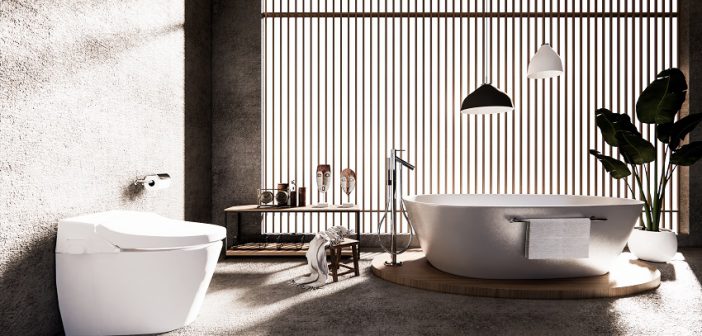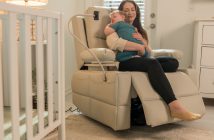yourself when getting on or off the toilet, or moving in and out of the shower. Older versions Bathrooms are part of everyday life, but they can also be risky for older adults or anyone with limited mobility. Hard floors, water, and tight spaces can lead to slips, trips, or falls. The good news is that making a bathroom safer doesn’t have to mean turning it into a hospital. Today, many small and clever changes can make a big difference while keeping the bathroom looking and feeling like home.
Grab Rails That Blend In
Support rails are useful for steadying often looked bulky or medical. Newer grab rails, however, are designed to match common bathroom styles.
They can be installed near key spots and some even double as towel rails. These rails quietly do their job without standing out or changing the look of the room. When positioned at standard toilet height, they’ve also been shown in research to improve postural stability and make it easier for older adults to rise from a seated position.
Slippery Floors Made Safer
A wet bathroom floor is one of the biggest hazards. Instead of using large rubber mats, many people now choose clear anti-slip coatings.
These are applied directly onto the floor and add grip without changing how the tiles look. In showers and bathtubs, thin textured strips also help prevent slipping. These safety features are simple, subtle, and effective.
Walk-In Showers With Lower Steps
Stepping over the side of a bath or a high shower tray can be hard for someone with limited balance or strength. Walk-in showers with a low step or no step at all make it easier and safer to get in and out.
They look clean and modern, and remove the need to lift your legs too high. These small changes reduce the chance of falls and can help people keep their independence.
Seating That Supports Without Standing Out
Having a place to sit in the shower or near the toilet is helpful for people who tire easily or need extra support. Many shower chairs today are designed to fold up when not in use. Some match the tiles or walls, so they don’t look out of place.
Another thoughtful example is the use of versatile toilet chair commodes for everyday support, which offer extra stability and comfort during toileting but can also be used independently or wheeled into place when needed. These supportive tools are a big help, yet don’t feel out of place in a home environment.
Better Lighting for Clearer Vision
As people age, they often need more light to see clearly. Bathrooms with poor lighting can cause confusion, especially at night.
Small upgrades, such as motion-sensor night lights or soft LED strips near the floor, help guide the way without being too bright. These lights come on automatically when someone enters the room, making night-time visits safer and more comfortable.
Easy-to-Use Taps and Controls
Turning taps or adjusting water temperature can be tricky for people with sore joints or weak hands. New taps often have simple levers or push buttons instead of twist handles.
Many also include built-in limits so the water never gets too hot. These changes make daily tasks easier and help prevent accidents, especially for those with reduced hand strength.
Support That’s Built Into the Room
Some bathroom fixtures are now made stronger so people can lean on them if needed. Vanities, sinks, or wall-mounted toilets may look the same as standard ones but have extra support built in.
These hidden features don’t draw attention, but they give added peace of mind. The room still feels like home, but it quietly offers more help behind the scenes.
Simple Changes That Matter
Making a bathroom safer doesn’t always mean starting from scratch. Small updates, like better lighting, easier taps, or a stable place to sit, can make a big difference to someone’s comfort and confidence. These subtle improvements help people feel more secure while keeping the bathroom familiar and welcoming.




